THE BEST AERO BIKE WHEELS
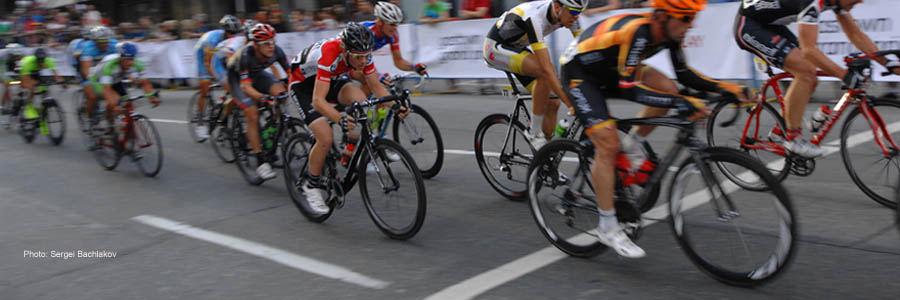
Aero bike wheels look fast, ride fast, and race fast. At roughly 60mm to 80mm deep, they are the wheels of choice for mostly flat terrain for those who ride at average speeds well above 20mph/32kph. They are best suited for time trial and triathlon racing, but some also work well in road races and crits where aero performance is decisive to winning.
For those of us who don’t race but want to go our fastest in training and on competitive group rides, the best aero wheels can give you that extra aerodynamic performance when it’s your turn to pull or sprint for the town line. They provide the stiffness, handling, and comfort you’ll find in all-around wheels 10-20mm shallower while maintaining your speed better than those.
In this post, I review, compare, and recommend some of the best aero bike wheels available today and explain why riders and racers should consider them.
Related: Looking for all-around carbon wheels for your road disc bike? Click Best Carbon Disc Wheelset
Related: Not sure what kind of wheels to get? Click Road Bike Wheels – How To Choose The Best For You
In The Know Cycling is ad-free, subscription-free, and reader-supported. If you want to help keep it rolling without any added cost to you, buy your gear and kit after clicking the store links on the site. When you do, we may earn an affiliate commission that will help me cover the expenses to create and publish our independent, comprehensive, and comparative reviews. Thank you, Steve. Learn more.
BEST PERFORMER – BONTRAGER AEOLUS RSL 62
The Bontrager Aeolus RSL 62 operates best in the aero lane and does it with stability in side winds and comfort across all paved surfaces better than most we’ve reviewed in this category.
Their stiffness, responsiveness, and ability to maintain momentum are on par with other aero bike wheels, while their wider rims handle a 28mm tire without compromising aero performance.
Selling for US$2700/£2200/€2840, you can order the RSL 62 directly from the Bontrager site and Sigma Sports.
Read my full review here.
BEST PERFORMER – ENVE SES 6.7
If TTs and triathlons are your jam or you just like to ride fast where it’s mostly flat, somewhat windy, and on less-than-perfect roads, the SES 6.7 is going to be one of the faster aero and lower rolling resistance wheelset choices and one of two overall best performers in the aero bike wheels category available to you.
On more variable terrain, ones with short, punchy climbs, or in situations where quick accelerations are key to closing or opening gaps, the SES 6.7 would take a lot more work compared to riders around you on shallower, more responsive wheels.
You can order the ENVE SES 6.7 at stores I recommend for US$2850, £3300, €4000 by using these links to BTD (BikeTiresDirect) 10% off w/code ITK10, Competitive Cyclist, Performance Bike, Merlin, and Sigma Sports.
Read my full review here.
BEST VALUE – RESERVE 52|63
The Reserve 52|63 aero wheelset has a clear priority – go fast on flat terrain.
That’s what Miles experienced when he rode this wheelset on his Propel in a straight line, going down rollers, and through corners. He could start a descent at the back of a group, not even pedal, and float by everyone ahead of him, even grabbing the brakes along the way.
I rode the 52|63 on the new Trek Madone Generation 8 light aero bike, replacing the similarly priced Bontrager Aeolus Pro 51 stock wheels. The increased speed with the Reserves was immediately and consistently noticeable whenever I rode on flatter terrain.
It’s also a great comparative value at US$1600, £1600, and €1800 when built with the DT Swiss 350 hubset in the wheelset we tested.
You can order them from BTD (BikeTiresDirect) 10% off w/code ITK10, Competitive Cyclist, and Sigma Sports.
Read my full review here.
WHAT YOU NEED TO KNOW ABOUT AERO BIKE WHEELS
Click on any red statement below to go directly to that part of the post
Find what you're looking for at In The Know Cycling's Know's Shop
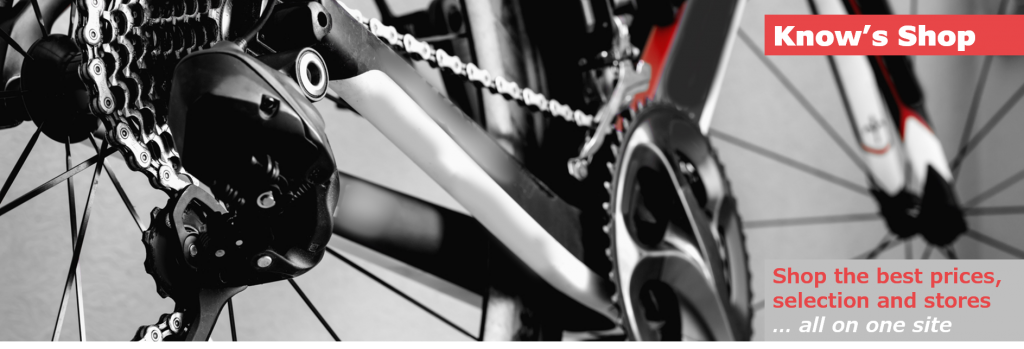
- Compare prices on in-stock cycling gear at 15 of my top-ranked stores
- Choose from over 75,000 bikes, wheels, components, clothing, electronics, and other kit
- Save money and time while supporting the site when you buy at a store after clicking on a link
WHY YOU SHOULD CONSIDER AERO BIKE WHEELS
The world that most cyclists know is flat. Pancake flat for the most part and even flatter than an IHOP pancake in the case of a half-dozen US states, according to researchers. Unless you live in or near the foothills of the Rockies, Sierra Nevada or the Appalachian Mountains, those of us who ride in the United States and Canada are going to be on pretty flat roads most of the time with no more than an occasional and short hill that exceeds a 5% grade.
And despite the wonders of the Alps and other mountain ranges featured in the pro stage races, Europe is mostly flat too. The European Plain, which runs from the Pyrenees along the Spanish and French border all the way to the Ural Mountains in Russia, “gives Europe the lowest average elevation of any continent,” according to no less authority than the Encyclopedia Britannica.
Australia, New Zealand, and the South Pacific? Pretty much flat, flat, and flat. The Sydney Morning Herald reported that “after more than four years” of work, the final topographic maps, covering Australia, New Zealand, and more than 1000 Pacific, Indian, and Atlantic Ocean islands” developed from radar data taken by the space shuttle showed that “Australia was the flattest continent in the world.”
As for the mountains, I’m told by some well-placed elves that only 12% of the world’s population actually lives there.
So why do so many of us look to buy (and read my post recommending) climbing wheels? Perhaps it’s because many of the most famous cyclists going back to icons Eddy Merckx and Fausto Coppi to modern-day heroes like Pogacar, Vingegaard, and Evenepoel conquer the cycling world by climbing mountains.
And why do we focus so much on wheelset weight when choosing between them? Perhaps because weight is one of the most quantifiable differences between wheels. Yet for most riders, reducing our own body weight by 2.5kg or 5lbs would save us a whole lot more in both road time and pocket change than replacing our stock wheels with a good set of climbing ones.
If you are a serious regular cyclist or what I call a road cycling enthusiast, you need to focus on aerodynamics and aero wheels, two things that are critical to cycling fast on the mostly flat earth we ride.
Weight only matters when you are accelerating and when you are going up steep hills and climbs beyond 7% or 8%. But, as explained above, the weight that matters most is your body weight and how much power you can crank out relative to your weight. Your bike and wheelset weight have little relative effect when accelerating and climbing until you are super fit, well-trained, and looking for incremental gains.
Unlike weight, your aerodynamics almost always matters except when you are drafting off someone in front of you or slowly going up steep grades. And the faster you go, the more aerodynamics matters. Aerodynamics matters even more than weight when you are accelerating, though the measured difference between the two is marginal.
If you regularly average about 20mph/32kph and faster on your rides, aerodynamics matters a lot and can save you minutes on a 50 mile/80K ride based on how you position yourself on your bike and what gear (wheels, frame, tires) and kit (helmet, jersey, etc.) you use.
If you are averaging anywhere near 25mph or 40kph on your road rides and races, you are leaving a lot of time on the clock and drag on the road if you aren’t locked into what better aerodynamics can be doing to save you time and power.
The chart below summarizes this; my posts on how to ride faster with better training and technique and gear and kit go into more detail on the role of aerodynamics.

So if you want to go faster, an aero wheelset is part of what will make it happen.
But aren’t aero bike wheels just for time trialists and triathletes, those poor fools that bend over with their hands out in aero bars for miles at a time, not having to worry about making any sharp turns, with no other riders near them to maneuver around, and going so ridiculously fast that those freakishly deep rims they ride on really make a difference?
Yes, deep aero bike wheels are certainly for those riders. They will be on a 60-65mm deep front wheel and an 80mm deep or completely covered disc wheel in the rear. But aero bike wheels, those in the 55mm to 65mm range, are also road racing bike wheels and regular riding wheels for fast roadies riding on flat and moderately rolling terrain.
In 2010 Zipp introduced the 404 Firecrest carbon clincher, a product that changed the direction of high-performance wheelsets of all depths. The Firecrest rim had a rounded “nose” where the spokes attached to the rim and toroid-shaped rim sides. This profile differed greatly from those pointy-nosed, V-shaped ones that deeper rims had at that time. It was also several millimeters wider at the brake track than most other wheels and was 58mm deep.
Testing showed the Firecrest had less aerodynamic drag than much deeper wheels and weren’t buffeted by side winds the way even shallower wheels were. As a bonus, you could actually slow these carbon-rimmed wheels down without growing old, waiting for it to happen, and losing your hearing from all the screeching coming from the braking action.
The Firecrest wheels set a new standard for rim and wheel design.
Most of the leading wheelset companies followed with carbon clincher wheels that emulated the Firecrest 404 shape and depth. Many also introduced triathlon wheels in the 70mm+ range to compete with the Zipp 808 Firecrest for the speed-demon, TT, and triathlon riders. Another group of shallower, 30-45mm deep carbon clinchers also came out for “all-around” riding and climbing led by the Zipp Firecrest 303 and later the 202.
In the last several years, more and more 60-65mm deep, carbon-clincher wheelsets with “blunt” noses or more rounded V or U-shaped rims with 21 and 23mm inside widths and 27mm to 30mm outside widths have been introduced. Tests show these aero bike wheels are nearly as fast as the very deepest triathlon wheels.
The rim profiles have also been refined so that, while affected by sidewinds, the best react in manageable ways rather than getting pushed around so much that you fear getting blown off the road. As they’ve gotten wider, they ride more comfortably and with more rolling efficiency by reducing vibrational rolling resistance in combination with a wider, less inflated tire that still provides a rim-wider-than-tire ratio while remaining laterally stiff and handling well.
Below, I share with you the conclusions my fellow evaluators and I reached after riding many of the best aero wheelsets you can use as racing bike wheels or for riding fast without needing to race. At the end, I also list the aero bike wheels we haven’t reviewed and why.
RATINGS AND REVIEWS OF AERO DISC BRAKE WHEELSETS
Best Performer
BONTRAGER RSL 62 – TRUE AERO BIKE WHEELS WITH A FEW TWISTS
The Bontrager Aeolus RSL 62 operates best in the aero lane and does it with stability in side winds and comfort across all paved surfaces better than most we’ve reviewed in this category.
My fellow testers Nate and Miles rode the RSL 62 and reached some similar and different opinions about them, partly owing to preferences and styles.
Nate rode them first and took some time to get them settled in and adapt to some of the newer aspects of these aero Bontragers. The rear wheel emitted some clicking sounds initially, my guess due to spoke or nipple tensioning issues, but that disappeared after a few rides.
Nate and Miles also found the DT Swiss 240 EXP freehub on the RSL 62 quite loud when coasting, something we all experienced riding this same new hubset on the RSL 51 and a few other wheelsets earlier this year but not to the level of what they heard on the RSL 62.
More significantly, tire pressure, and perhaps tire selection, seemed to affect how well the RSL 62 carried the wheels’ momentum on the road.
The RSL 62’s 23mm internal and 31mm external width on these hooked rims keep most 28mm tubeless tires narrower than the rim for optimum aero performance. Yet at the suggested tire pressure where Nate rode the Bontrager R3 Hard-Case Lite tubeless tires I mounted to these wheels, he was underwhelmed by their cruising speed in the fast group rides he leads.
Miles, perhaps due to his inveterate racer’s mindset, pumped the tires up above the suggested level and found more speed and good maintenance of his momentum once well into the aero-speed realm (22mph/35kph).
Both agreed the Bontrager RSL 62 cut through direct and crosswinds without any issue. And despite their slightly different tire inflation approaches, both also enjoyed comfortable rides with great handling on the wide wheel and tire combination.
Stiffness is another strength of the RSL 62. Miles could translate that characteristic into sprints, where it seemed to him that every watt he put down translated to the wheels that also held the bike right on his line.
Yet neither Nate nor Miles felt the wheelset’s stiffness translated to better than average acceleration and noticed the added effort to take these relatively light wheels (1539 grams with tape but no valves) up even 5% gradient hills.
The RSL 62 are best-ridden fast and probably raced on flat and rolling terrain. Bontrager makes the RSL 51 for more versatile, all-around riding and the RSL 37 for climbing in the mountains.
Selling for US$2700/£2200/€2840, you can order the RSL 62 directly from the Bontrager site and Sigma Sports.
Best Performer
ENVE SES 6.7 – A DEDICATED AERO WHEELSET
There were two areas of questions I especially wanted to answer in our evaluations of the ENVE SES 6.7.
First, how well does it perform against other 60mm or so deep aero bike wheels? If you are looking for a wheelset for mostly flat, fast riding, including time trials or the bike leg of a triathlon, how does the ENVE SES 6.7 rank on the individual performance criteria and overall?
Secondly, how does the SES 6.7, a new model in ENVE’s line, compare with other ENVE wheels of around the same depth or purpose?
ENVE stopped making the SES 5.6, a wheelset I had rated the best performer among all brands of wheels we tested in the aero category, when it started selling the SES 6.7. They also updated the all-around, yet very aero SES 4.5 simultaneously. And ENVE continues to make the unchanged, lower priced ENVE 65 and deeper SES 7.8.
Not long into our first rides, it was immediately clear to fellow tester Nate and me that the ENVE SES 6.7 performs more like wheelsets in the aero category from other brands than the SES 5.6 it replaces in ENVE’s line. Sadly, there’s no sibling resemblance to the responsiveness or versatility that made the ENVE SES 5.6 a standout in this category.
The SES 6.7 holds its speed on flat and rolling terrain well. But to me and the far faster Nate, the SES 6.7 ability to hold its momentum – a surrogate for its aero performance – is indistinguishable from most wheels with similarly deep or even deeper rims we’ve tested.
While I don’t put much stock in wind tunnel data provided by cycling product suppliers as different testing protocols make it hard to compare, even ENVE’s published tests show their SES 6.7 creates somewhere between 1.5 and 4.5 watts less weighted average drag at 30mph/48kph than the selected current or one generation old aero wheelsets they tested from their competitors.
More interesting to me are the comparative wind tunnel results of ENVE’s current SES wheelsets. These showed less than a watt of difference between the 6.7 and 4.5 or 7.8 based on both the weighted average drag and at 0 to 15-degree wind or yaw angles at both 30mph/48kph and 20mph/32kph.
The ENVE SES 6.7 and Bontrager RSL 62 do perform better than other aero wheelsets we’ve tested in their stability and compliance.
While both Nate and I independently noted that the SES 6.7 was sensitive to side winds, the wheel’s response was subtle and gradual. It was almost as if the wheel told me, “I got this,” never changing its direction of feeling fast enough that I felt I needed to react quickly.
For a wheelset this deep (60mm front, 67mm rear), Nate commented that getting pushed around a bit in stronger winds was not unexpected. It seemed reasonable to him that the SES 6.7 would but welcoming that it, like the RSL reacted calmer than other aero bike wheels.
With its wide rims, the 27mm and 28mm tires, once inflated on the SES 6.7, measure up narrower than the 31mm wide front and 30mm rear rims. This rim-wider-than-tire relationship is important to getting that last watt or so of aero performance out of the rim and tire combination.
With other wheels in this category whose outside rim width is 27mm to 28mm, a 25mm or 26mm tire is aerodynamically optimal.
Beyond the aero considerations, I noted that rolling on 27mm ENVE SES and 28mm Continental Grand Prix 5000 S TR made the SES 6.7 wheels “quite pleasant” to ride. I inflated them to around 50psi, given my 148lbs/67kg body weight.
Even at the 65 psi pressure that Nate (155lbs/70kg) pumped them to, he felt “very comfortable” and “totally at home” on the rough, bumpy roads we often ride in New England.
You wouldn’t naturally think that a compliant wheel or rim-tire combination is something a rider looking for ultimate speed would value from an aero-depth wheel or admit to (HTFU!). Yet, we’ve come to realize that wider wheels and tires in the right combination not only make for a more comfortable ride but also make you faster as they reduce your vibrational rolling resistance.
Earlier generation aero bike wheels and even current ones with narrower rims and are more aero with 25mm tires can add vibration loss rolling resistance on all but the best roads that can outweigh the aero benefit of a narrower tire.
Wider rims like those offered by the ENVE SES 6.7 allow for both optimized aero and rolling resistance performance with a 28mm tire.
All of that said, Nate and I concluded that other than for those rolling at 25mph/40kph on relatively flat TT or triathlon courses where you’ve dialed in your position and all the other aero-sensitive aspects of your gear and kit, it’d be hard to justify owning the ENVE SES 6.7 given the option of riding one of the best all-around wheelsets like the SES 4.5.
On more variable terrain, ones with short, punchy climbs, or in situations where quick accelerations are key to closing or opening gaps, the SES 6.7 would take much more work than riders around you on more responsive wheels.
But if TTs and triathlons are your jam or you just like to ride fast where it’s mostly flat, somewhat windy, and on less-than-perfect roads, the SES 6.7 is going to be one of the faster aero and lower rolling resistance wheelset choices and one of two overall best performers in the aero wheelset category available to you.
You can order the ENVE SES 6.7 at stores I recommend for US$2850, £3300, €4000 by using these links to BTD (BikeTiresDirect) 10% off w/code ITK10, Competitive Cyclist, Performance Bike, Merlin, and Sigma Sports.
Best Value
RESERVE 52|63 – FAST ON FLATS, EASY ON YOUR WALLET
The Reserve 52|63 aero wheelset has a clear priority – go fast on flat terrain.
It’s also a great comparative value at US$1600, £1600, and €1800 when built with the DT Swiss 350 hubset in the wheelset Miles and I tested. You can get the Reserve 52|63 with DT Swiss 180 or 240 hubs for considerably more, though it’s hard to see why you’d want to do that if you’re looking for a dedicated aero wheelset to economically add to your quiver.
Yes, it performs on par with the average aero wheelset in other characteristics. But when it’s raw speed you’re looking for on a flat ride or crit race, the Reserve 52|62 really shows up.
That’s what Miles found when he rode this wheelset on his Propel in a straight line, going down rollers, and through corners. He could start a descent at the back of a group, not even pedal, and float by everyone ahead of him, even grabbing the brakes along the way.
I rode the 52|63 on the new Trek Madone Generation 8 light aero bike, replacing the similarly priced Bontrager Aeolus Pro 51 stock wheels. The increased speed with the Reserves was immediately and consistently noticeable whenever I rode on flatter terrain.
Those of us who are traditional cycling nerds might look at the 52mm front wheel depth (actually 52.5mm, per my calipers) and wonder how this wheelset can carry its momentum better than those that are 60mm or deeper.
Nerds trying to learn new tricks or into tech marketing mumbo jumbo might look at how much wider these wheels are than other aero wheelsets and whether that explains where some of the Reserve’s added speed comes from. The front rim measures nearly 26mm between its hooked beads and 35mm at its widest externally.
Despite or because of the different rim dimensions and profiles between the front and back wheels, together they are stable on windy days, cutting through breezes and gusts as well as shallower wheels though not as well as the best, deeper aero wheels.
The same goes for the Reserve 52|63’s compliance, at least with the 28mm benchmark Continental Grand Prix 5000 S TR we use to remove one variable from our wheelset comparisons.
Given the Reserve 52|63’s internal and external widths, riding them with 30mm or even 32mm wide tires and at lower pressure would likely make them even faster and more comfortable, with fewer road vibration rolling resistance losses and without giving up much aero performance of the rim-tire interface and width ratio.
It would also calm ETRTO safety adherents.
Note that these rim and tire widths might make the Reserve 52|63 a hard wheelset to fit into some aero and racing bikes more than a few years old.
The Reserve 52|63 is quite stiff side to side and handles well in corners for an aero wheelset. Yet it isn’t as responsive as the narrower and lighter wheelsets in this aero category. We held our speed well enough to stick with groups going up smaller rollers but on longer climbs, it’s more of an average wheelset.
It’s important to remember what aero wheels are focused on and not ask them to be an all-around, more versatile one. This Reserve’s greatest strength is pure speed on flats and getting that speed at a good value.
If you’re a big power rider, a long-distance time trailer or triathlete, or an enthusiast who just likes to ride fast on the flatter terrain where you ride, the Reserve 52|63 is a wheelset that will suit you and your wallet well.
You can order them from BTD (BikeTiresDirect) 10% off w/code ITK10, Competitive Cyclist, and Sigma Sports.
ZIPP 404 FIRECREST – PERFORMANCE FOR LESS
While you can find better-performing aero wheels and lower-priced ones than the Zipp 404 Firecrest Tubeless Disc Brake, it’s the performance-price combination that makes this wheelset the Best Value in the aero wheelset category.
As road disc wheels move into what I’ve identified as their 4th generation, it’s become harder to apply the traditional climber, aero, all-around, etc. labels to describe what type of terrain a wheelset performs best on or what type of rider it would be best suited for.
This latest generation Zipp 404 Firecrest is fast on the flats like its predecessors as you would expect any wheelset with its 58mm rim depth should be.
But, it also climbs and rides across rolling terrain better than most wheelsets 60-65mm deep and as good as some 10mm to 15mm shallower. Add to that its ability to hold its line well in crosswinds, a welcome performance characteristic whether going all out on an exposed flat road or a fast downhill after a good mountain climb.
No, the Zipp 404 Firecrest is not the all-everything wheelset that I and my fellow testers fell madly in love with riding the Zipp 454 NSW. But the 404 is less than half the price of its US$4000/£3200/€3600 upper-crust, heart-throb sibling.
Nor is it the performer across all criteria or as expensive as the US$2850/£3300/€4000 all-around Best Performer ENVE SES 4.5 that excels on flats, rollers, and shorter climbs.
But if you want an aero-category wheelset that performs nearly as well as most on a wide range of road terrain at a price less than many that are best over a narrower range, the Zipp 404 Firecrest is there for you.
As with any wheelset with a deep rim that’s intended for speed, you don’t want to go out and reduce your aero performance by putting a 28mm wide tire on the Zipp 404 Firecrest’s front wheel instead of a 25mm one if you don’t have to. You already get improved comfort and handling thanks to the 404’s added volume and straighter tire sidewalls coming from its 23mm inside width, hookless rims.
Note: If you weigh over 175 lbs, you are better off going with a 28C tire. The recommended inflation pressure for your weight and a 25C tire would put you above the recommended inflation pressure for this rim of 72.5 psi or 5 bar.
While not the plushest or best handling wheels on the block, my fellow tester Miles and I found it’s plenty comfortable enough and handles just fine with our top-rated 25mm wide Bontrager R3 Hard-Case Lite and Schwalbe Pro One TLE tires that we tested on this wheelset. (The discontinued Zipp tires you see in the photos were used only to soothe my aesthetic sensibilities.)
For the Zipp 404 Firecrest, your tires must be tubeless and hookless compatible. And if you are partial to riding 28mm rubber, you can be both aero and comfortable if you are willing to work with me. Put a 25mm tire on the front wheel where aero performance is crucial, and a wider tire adds little extra comfort. Then mount up a 28mm on the rear where aero is less decisive, and you’ll feel the comfort of a wider tire more.
Unlike the hubs used on the Zipp 454 NSW or ENVE SES 6.7 and many other performance-carbon wheelsets these days, the ZR1 freehubs used on the Zipp 303 and 404 Firecrest wheels are loud. They’re just as audible but not as rich sounding as the Chris King or even the Industry Nine hubs you can select or build into some wheelsets.
The freehub noise Miles and I heard may be beautiful music to your ears. Just know that you can’t coast in the wheels of your group ride mates or a competitive race peloton with 404s rolling underneath you without being noticed and likely encouraged to take more than your share of pulls or be more easily marked if you try a breakaway.
But the way this US$2000, £1700, €1900 wheelset performs, your buds may think you’re riding a more expensive set. And with how well you move across all pitches of paved roads, they may think you are fitter than you may actually be.
With the Zipp 404 Firecrest’s performance and its 1521 gram weight per my scale, it’s hard to see a reason to buy a 10-15mm shallower, more typical 40-50mm deep wheelset for so-called all-around riding. The latest Zipp 303 Firecrest falls in that depth range, but my experience suggests it’s better for very hilly terrain and mountain road climbs as an all-arounder.
Certainly, it’s not a budget wheelset. There are many available from established and new brands that sell for less. But the Zipp 404 Firecrest clearly outperforms all of those we’ve tested in that price range. That performance, in my humble opinion, justifies the added spend.
In our experience, this is a wheelset that performs comparably to or better than many aero or all-around ones that cost more and can do so across a mix of terrain that few more expensive wheelsets can.
You can order the Zipp 404 Firecrest using these links to BTD (BikeTiresDirect) 10% off w/code ITK10, Competitive Cyclist, Performance Bike, Merlin, and Sigma Sports.
ENVE 65 – AN AERO FOUNDATION
If you’re not all-in on aero but want some aero benefits, the ENVE 65 wheelset provides a solid foundation for aero riding without making a maximal investment.
What is all in? Aero frame, aero components, aero kit, 23-25mph/37-40kph, TT, and crit racers, where every bike length matters.
What is want some aero benefits? Race bike, aero aware, 20mph/32kph and up, fast group rides, occasional races, where going fast on flats and gently rolling terrain matters.
Most aero bike wheels aren’t versatile enough to ride on all terrain. But on the right terrain and in the right riding situations, the best aero wheels make a decisive speed difference when compared to shallower, all-around ones.
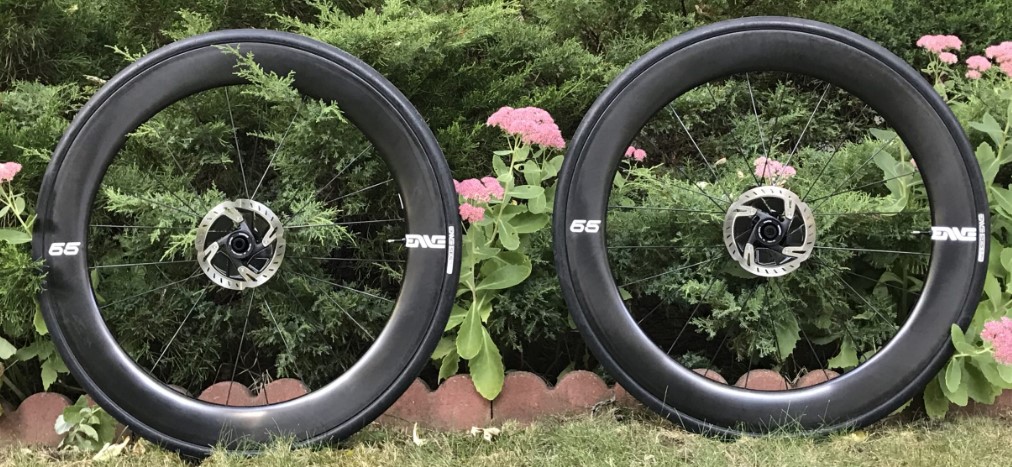 If you want the benefits of the best aero wheelset performance but can’t quite justify the investment, the ENVE 65 will get you close and for a lot less. At US$1400 for the ENVE 65, that’s over US$1000 less than my best-rated aero road disc wheelset performers. ENVE’s pricing outside the US, £1800, €2200, puts them at a far smaller discount in other regions of the world.
If you want the benefits of the best aero wheelset performance but can’t quite justify the investment, the ENVE 65 will get you close and for a lot less. At US$1400 for the ENVE 65, that’s over US$1000 less than my best-rated aero road disc wheelset performers. ENVE’s pricing outside the US, £1800, €2200, puts them at a far smaller discount in other regions of the world.
The ENVE 65 is stiff and compliant. That’s a great combination to have in any wheelset, one that other aero and all-around wheelsets I’ve ridden priced in the same range as the ENVE 65 rarely pull off.
Aero performance is, obviously, the critically important measure of an aero wheelset. While we can’t test them in a wind tunnel, I and my fellow testers Nate and Miles can and have judged and compared how well these and other aero wheels hold their momentum at a range of aero speeds.
Based on those admittedly subjective evaluations, the ENVE 65 is on par with higher-priced aero wheelsets, though slightly off the pace of the best.
It also holds its own or, perhaps better said, holds you reasonably close to your line in crosswinds, better than some and not as well as others in our experience. The ratings and review chart provide specific comparisons on this measure.
The ENVE 65’s 28.3mm outside rim is wider than the tire per my measurements with the ENVE hookless rim compatible and approved/recommended 25mm tubeless tires.
Acceleration, handling, and climbing performance are on par with the average aero disc wheelset in this review but off the pace of the best performers. Whether those performance differences would be noticeable in a flat or rolling TT or crit is debatable. They would if you were to take them on hillier terrain or races with more demanding cornering.
The same ENVE Alloy hub internals engage and roll very well on the road and emit a low-frequency, hollow sound. The 65 uses the Foundation hub shell, only 6 grams heavier than the ones used on ENVE’s SES wheels which are milled to allow for their paired spoke lacing. You can also order the ENVE 65 with a distinctively louder Industry Nine hub if you prefer.
So how do the aero category’s Best Performers compare to the ENVE 65, and is that performance enough to justify the price difference?
The Best Performers are less affected by the crosswinds and can mount 28mm tires to provide more comfort and lower vibration loss rolling resistance without reducing aero performance.
The choice is up to your aero performance id and cycling budget ego to resolve.
You can order the ENVE 65 wheelset at my top-rated stores using these links to BTD (BikeTiresDirect) 10% off w/code ITK10, Competitive Cyclist, Performance Bike, Merlin, and Sigma Sports.
REYNOLDS BLACKLABEL AERO 65 DB – STIFF, FAST GLIDERS
If you are looking at an aero wheelset like the Reynolds Blacklabel Aero 65 DB, you should be all about going fast. You likely race and may even live to do so. But you certainly have speed as your top priority, and there’s nothing else in your top 5.
You’re probably doing the whole aero thing – an aero bike, aero position, aero road helmet, racing kit, shaved legs, etc., etc. You don’t care much about things that don’t matter when it’s all about going fast for you. Things like comfort, climbing, and even the occasional crosswind are distractions at best.
If that doesn’t describe what you are looking for, you’re in the wrong aisle (or the wrong review).
If it does, come a little closer, and let me tell you about this Blacklabel Aero 65 DB wheelset from Reynolds.
The bottom line, this is a stiff, fast wheelset. My fellow tester Miles, a P/1/2 crit and road racer who finishes top 10 in his age group at the US Masters Nationals, reported that “once in a full sprint, these wheels just simply fly.”
Riding the Aero 65 DB wheelset enabled him to snap a bunch of sprint-oriented Strava KOMs and make his Giant Propel Advanced SL Disc go about as fast as he thought it could.
Speed comes from a stiff wheelset that responds when you tell it to go with rims that cut through the air on smooth-rolling hubs. That’s the make-up of this wheelset.
The Blacklabel Aero 65 DB uses i9 hubs. They’re louder than most but engage quickly and roll easily. The rims have a V-shaped profile with internal spoke nipples that trades-off crosswind performance and easy spoke tensioning adjustment for straight-ahead lift.
Remember, it’s about the speed with this wheelset. If loud hubs and the need to keep both hands on the bars in the crosswinds isn’t for you, neither are these wheels. They also aren’t the most comfortable wheels at the 75-80psi that Miles rode them at or the 60psi that I did on Continental Grand Prix 5000 TL tires that mounted easily but took a few iterations to seal and hold air.
For these Reynolds wheels, it’s not just about going fast in a sprint or straight line. Both Miles and I experienced the momentum the Aero 65 DB gave us to quickly punch the kind of 100-meter climbs up to about 10% you’ll often find on circuit races. We were also impressed with how well their aerodynamics assisted on extended climbs up to a 5% grade.
Oh, and they corner very well at speed too. While crits and road races are only a dream in the age of Coronavirus, when we tested these wheels, Miles reported he “was able to confidently whip through some corners at around 30mph” in his non-race testing.
I don’t often ride that fast, even on a straight, but when I do, I feel the sensation of gliding along at such pace and with such ease that I could block out the stresses of life around me.
If you’re all about going fast and doing crits and rolling road races and time trials – and everything else be damned – you should consider the Reynolds Blacklabel Aero 65 DB. At US$2300, £1800, €2160, it is also competitively priced among others in the aero wheelset category.
ZIPP 808 FIRECREST – MISSION SPEED!
Any wheelset that’s 80mm deep, like the latest tubeless, disc-brake Zipp 808 Firecrest, will have an intensely focused mission. Speed!
Your wheels play an important role on the track or in a time trial or triathlon, or any ride on a course with a similar profile where pure speed matters more than shrewd strategy. While not as important as your physiology, fitness, or body position, wheels are one of the equipment choices that matter most, along with your bike, clothing, helmet, bars, and tires.
And when deciding between wheels for these events, aero drag plays the most important role compared to other considerations, including stiffness, weight, comfort, and rolling resistance.
Differences in TT and triathlon courses can and often change how well a given wheelset performs for you. Some courses are quite flat, while others have rollers or a key climb. Some are relatively straight, while others have a lot of turns that can make it quite technical. Regardless of the terrain and turns, some TTs and triathlons fall on days with little to no wind, while others happen in places or at times when there’s always some wind to contend with.
I’m not a triathlete, TT racer, or trackie. And while I like to ride fast, I’m not worthy of a wheelset like the Zipp 808 Firecrest, which hits its stride around 25mph/40kph
Fortunately, my fellow testers Nate and Miles are fast, worthy riders. Nate leads a weekly Bullet Train group ride that averages in that mid-twenties mph, early-forties kph speed range and has done his share of individual and team time trials. Miles is a regular P/1/2 and masters racer who competes regionally and nationally in crits and stage races that include time trials.
They both know high-speed riding and racing and more tactical road racing on flats, hills, and climbs. They each tested the Zipp 808 Firecrests on various fast rides and races. I’ve captured their feedback here.
With the Zipp 808 Firecrest beneath you, you almost immediately feel the wheels holding your speed on the flats even before getting up to race pace. They seem to just roll without too much effort. And once you are cranking in the big gear at aero speeds, they feel like a steamroller. They just go.
But do they roll any faster than a 60-65mm deep aero wheelset in a race or fast ride? Perhaps, but the 808 Firecrest don’t feel like they are dramatically more aero or hold higher speeds with less effort the way going from a 40-45mm all-around to a 60-65mm deep aero set of hoops does.
Nate rode the same time trial with the 808s on his Specialized Venge aero bike and a shallower set of wheels on his more road race-oriented Specialized Tarmac. He finished with essentially the same time at the same average power.
While it’s tough to control for other factors (e.g., differences in temperature, humidity, wind, etc.) and with only two data points, it’s most likely that the rolling terrain of the course limited Nate’s ability to ride at a speed fast enough where the deeper Firecrest would make a difference.
This isn’t inconsistent with what wind tunnel testing of wheels of different depths has shown. It’s a cycling case of diminishing returns; aero drag reduction improvements get smaller as wheels get deeper or as testing speeds get lower.
We used 28mm Continental Grand Prix 5000 S TR tubeless tires with sealant for all of our testing. That’s the width that Zipp recommends to optimize the 808 Firecrest’s aero performance and the tire that independent tests have found to have among the lowest rolling resistance of tubeless tires that use a puncture belt.
The wheels themselves measure 1673 grams on my scale, including rim tape, valves, and an XDR freehub. Both the front and rear wheels average 23.3mm inside and 27.4mm maximum outside width measured at a half dozen places on each wheelset.
Aerodynamically, 28mm tires on 27.4mm width rims go against the rim-wider-than-the-tire principle. Inflated both to 60psi and 80psi (the latter pressure above the recommended ETRTO recommended 5 bar/72.5psi limit for hookless rims like the 808), four of the best tubeless tires with puncture belts I recommend come in between 29.7mm and 30.7mm wide per my measurements on these wheels. (The fifth isn’t made in 28mm width.)
So why use a 28mm tire instead of a 25mm one that would set up much narrower on the rim?
While we’ve ridden 25mm tires on the Zipp 404 Firecrest and Zipp 454 NSW wheelsets that have similar inside and outside width dimensions to the 808 Firecrest for just this reason, that was before Zipp published their hookless road tire compatibility chart.
And of the best tubeless tires with puncture belts that I recommend – Conti GP 5K S TR, Schwalbe Pro One TLE, Specialized S-Works Turbo RapidAir, Michelin Power Road TLR, and Veloflex Corsa Race TLR – only the 25mm size Schwalbe and Veloflex are noted as compatible with the 808 Firecrest and Zipp’s other 23mm inside with wheels on their chart.
With my calipers, both of the compatible 25mm tires measure essentially the same width as the outside dimension of the rim once mounted and inflated in the 60 to 80 psi range.
Rim depth, tire choice, tire and rim widths, and inflation pressure all matter to how fast you’ll go
Additionally, parent SRAM’s tire pressure guide urges a rider heavier than 82kg/180lbs to go up to a tire wider than 25mm when using a tubeless, hookless wheelset like the 808 Firecrest.
For the TT/Tri athlete willing to ride on race day with a tire with lower tested tire loss rolling resistance but no puncture belt, only the 25mm Continental GP 5K TT Tdf passes the compatibility guideline.
Further, for my review of how wide wheels and tires can make you faster, I found that emerging yet incomplete research shows that the reduction in vibration-caused rolling resistance you get from a wider, less inflated tire can more than overcome the increase in aero drag caused by that same tire exceeding the rim’s width in situations where high aero speeds and less than perfect road surfaces are at play.
In our road testing, we found the 28mm Conti GP 5K S TR – Zipp 808 Firecrest combination quite comfortable on good and bad paved road surfaces. At a minimum, this didn’t dissuade Nate and Miles from slowing down the way a jittery ride might.
That same 28mm tire on a wider rim that measures wider than the tire would reduce both aero drag and vibration-created rolling resistance. As the Zipp 808 Firecrest rim width is what it is, it looks to me that you need to choose from a limited number of 25mm tires, ride good surfaces, and be a lighter rider that requires less inflation pressure to get that both the optimum low aero drag and rolling resistance.
Your ability to keep going fast is also affected by how your wheels react to winds coming from the side. If you get pushed off your line, you’ll be slowed by fighting back. And if you get pushed too much, you may back off the gas a touch (or more) out of your desire to stay upright.
In this context, the 808 Firecrest wheels performed well but within limits. They exhibit an almost “gyroscopic stability” that counteracts the sideways directional force from the winds to keep them in line. They want to roll in a straight line when you are going fast.
Nate noticed this counteracting effect within the first mile of testing. The wheels were much less eager to turn, whether the wind wanted them to turn or he wanted them to turn without any wind.
When it got quite windy, however, as in above 10 mph, Miles, rather than the wheels, had to do the work to keep the wheels tracking. With gusts above 15 mph, not an uncommon occurrence where we ride in New England, Miles had all he could do to keep himself upright.
At times Miles rode his Giant Propel aero bike with his elbows on the tops in a time trial position. The wheels felt great when it was calm, but any wind made him nervous. Admittedly, this effect would be lessened if he used aero bars rather than the recently UCI-outlawed praying mantis or puppy paws position.
While Nate and Miles weigh in the 155-160lb/70-73kg range and aren’t dedicated time trial or triathlon riders, neither are immune to and both are experienced with riding and racing in various road or weather conditions.
What came out in their experience riding the Zipp 808 Firecrest as compared to the many 60-65mm deep wheels we’ve also tested was the reduced maneuverability of these deeper wheels.
While the 808s are very stiff and reasonably light wheels, given their depth, they don’t handle or respond to acceleration efforts as easily or quickly as their shallower aero wheelset competitors. The difference is noticeable on a parkour with many turns and some climbing far more than the added speed you may get on a straighter, flatter course.
For these reasons, Miles passed on using the 808 Firecrest on the TT stage of the Green Mountain Stage Race, and Nate preferred to use 60-65mm deep wheels on his Bullet Train rides. Both courses have more breeze, turns, and rollers than the boys thought the 808s would excel at. And neither would ride them in a crit – too many turns and a tick or two slower acceleration coming out of them regardless of the terrain or wind conditions.
This begs the question – would the lighter, scalloped 858 NSW that Zipp introduced at the same time as the 808 Firecrest be more suitable on a breezier, twistier, hillier course?
And would it be worth the 2X price you’d have to pay for it?
I’d only be speculating if I were to try to answer the first question and substitute my value judgment for yours with a response to the second one.
What is pretty clear, though, is that the Zipp 808 Firecrest is best suited for flat, straight, and calm weather high-speed time trial or triathlon events and similar rides.
At US$2300, £2235, €2540, they’re a modest discount compared to the best 60-65mm deep aero bike wheels. If you race the kind of events we’ve found these wheels best suited for or are looking to start doing so, the Zipp 808 Firecrest would be worth considering.
You can find them at these links to recommended stores BTD (BikeTiresDirect) 10% off w/code ITK10, Competitive Cyclist, Merlin, and Sigma Sports.
WHEELSETS WE’D LIKE TO REVIEW NEXT
Full Priced Carbon
Campagnolo Bora WTO 60 – I’ve not been able to get a hold of one yet to test. If I do, I’ll add it to this review. (link to Know’s Shop).
DT Swiss ARC 1100 Dicut DB 62 – Another one I hope to test. The rims are designed by Swiss Side, made by DT Swiss, and use DT’s 240 hubs and Aerolite spokes. The wheels are typically discounted from their original high asking price to bring them in just under some of those I’ve reviewed above.
HED Vanquish RC6 – Chalk this up in the column of haven’t but hope to ride it soon. I’ve tested the Vanquish 4 (read the review here) and hope to ride the Vanquish 6 at some point. If you can’t wait, you are in good company and can follow this link to Know’s Shop to buy it online at stores I recommend.
Value Carbon
Many brands sell 55mm and deeper wheelsets in the $1000-$1500 range. I’ve been digging into the broader group of wheelsets I call “value carbon” in a multi-part examination and set of reviews starting with my post The Best Carbon Wheelset for the Money.
While that post focuses on 40mm – 50mm all-around value carbon wheelsets, many of the same companies also sell deeper wheels at similar prices. I believe much of what I’ve found in my research for that review extends to those selling aero bike wheels.
It’s a broad generalization, but from what I’m finding so far, the saying that you get what you pay for appears to hold true among value carbon wheels. The question we roadies each have to ask ourselves is whether we need all that the full-priced wheels provide.
There are 10,000 words about this in the post I linked you to above, so I’ll stop here and encourage you to go there if you are interested in reading more.
* * * * *
Thank you for reading. Please let me know what you think of anything I’ve written, or ask any questions you might have in the comment section below.
If you’ve benefited from reading this review and want to keep new ones coming, buy your gear and kit after clicking the store links in this review and others across the site. When you do, we may earn an affiliate commission that will help me cover the expenses to create and publish more ad-free, subscription-free, and reader-supported reviews that are independent, comprehensive, and comparative.
If you prefer to buy at other stores, you can still support the site by contributing here or by buying anything through these links to eBay and Amazon.
You can use the popup form or the one at the bottom of the sidebar to get notified when new posts come out. To see what gear and kit we’re testing or have just reviewed, follow us by clicking on the icons below.
Thanks, and enjoy your rides safely! Cheers, Steve
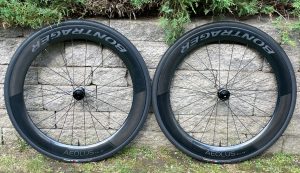
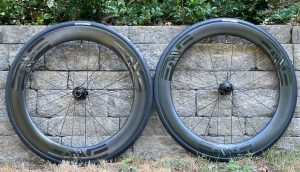

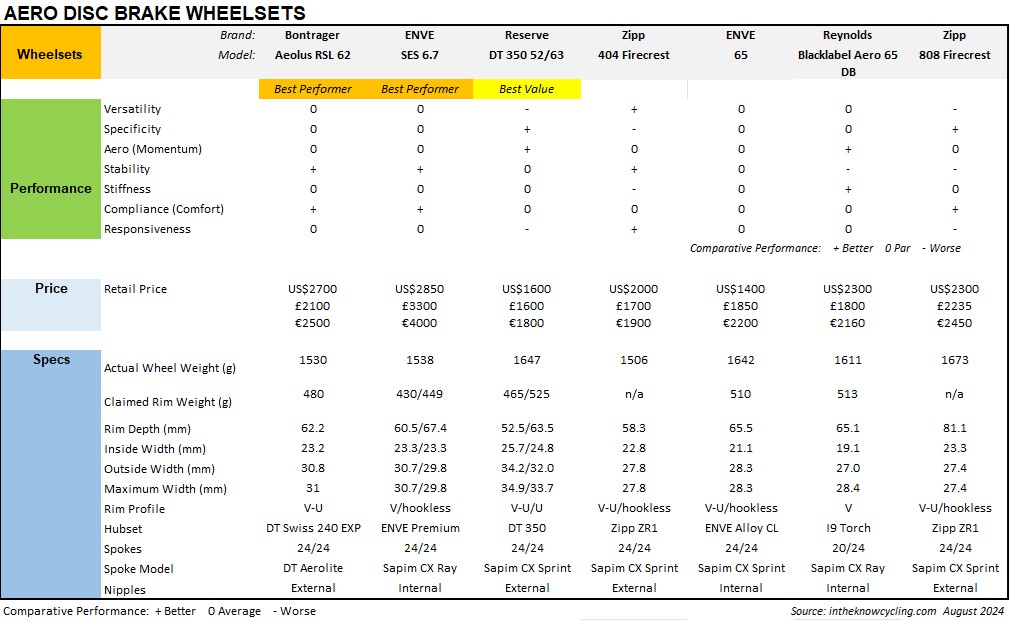
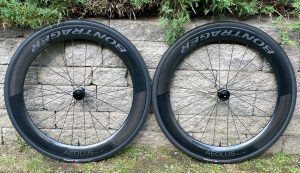
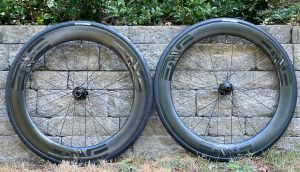
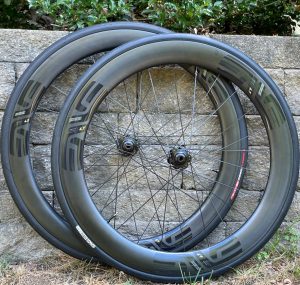
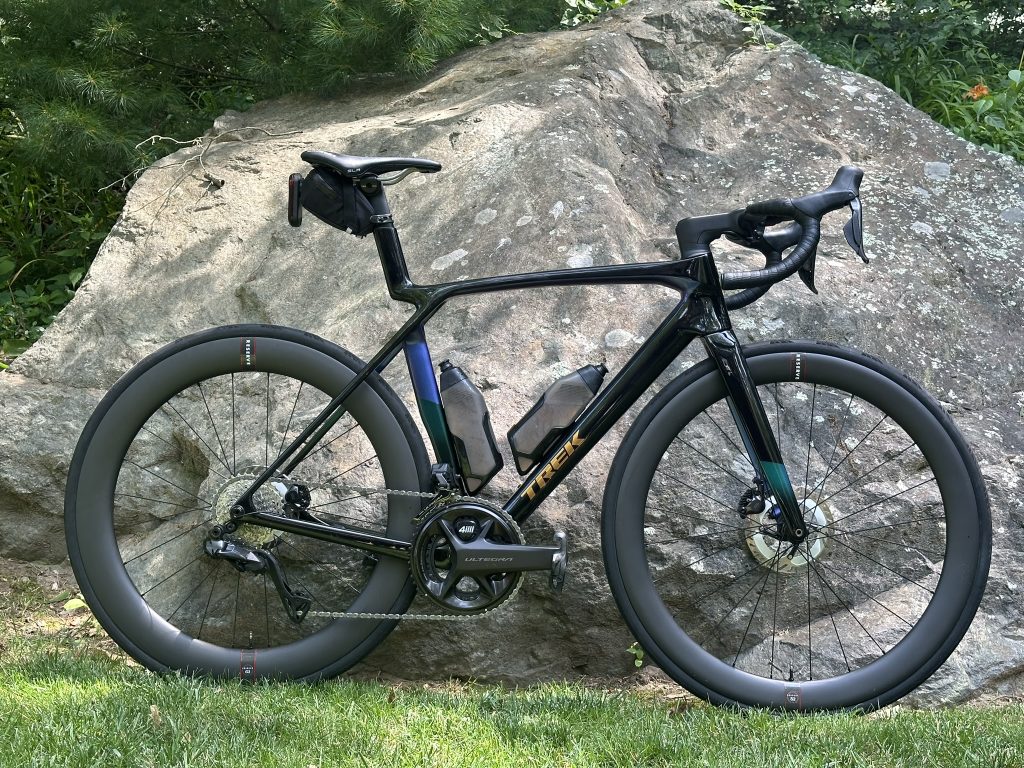
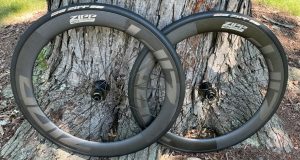
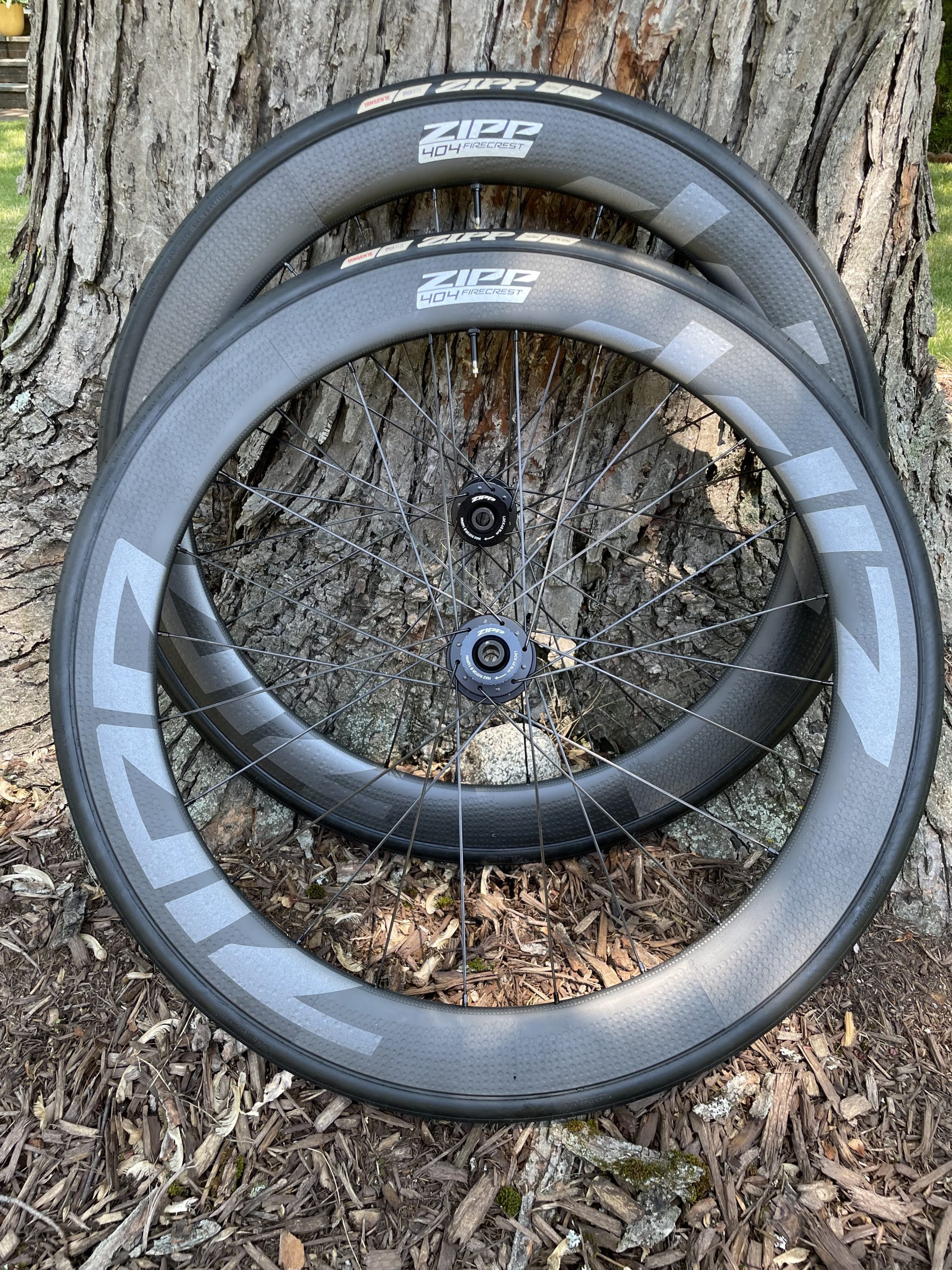
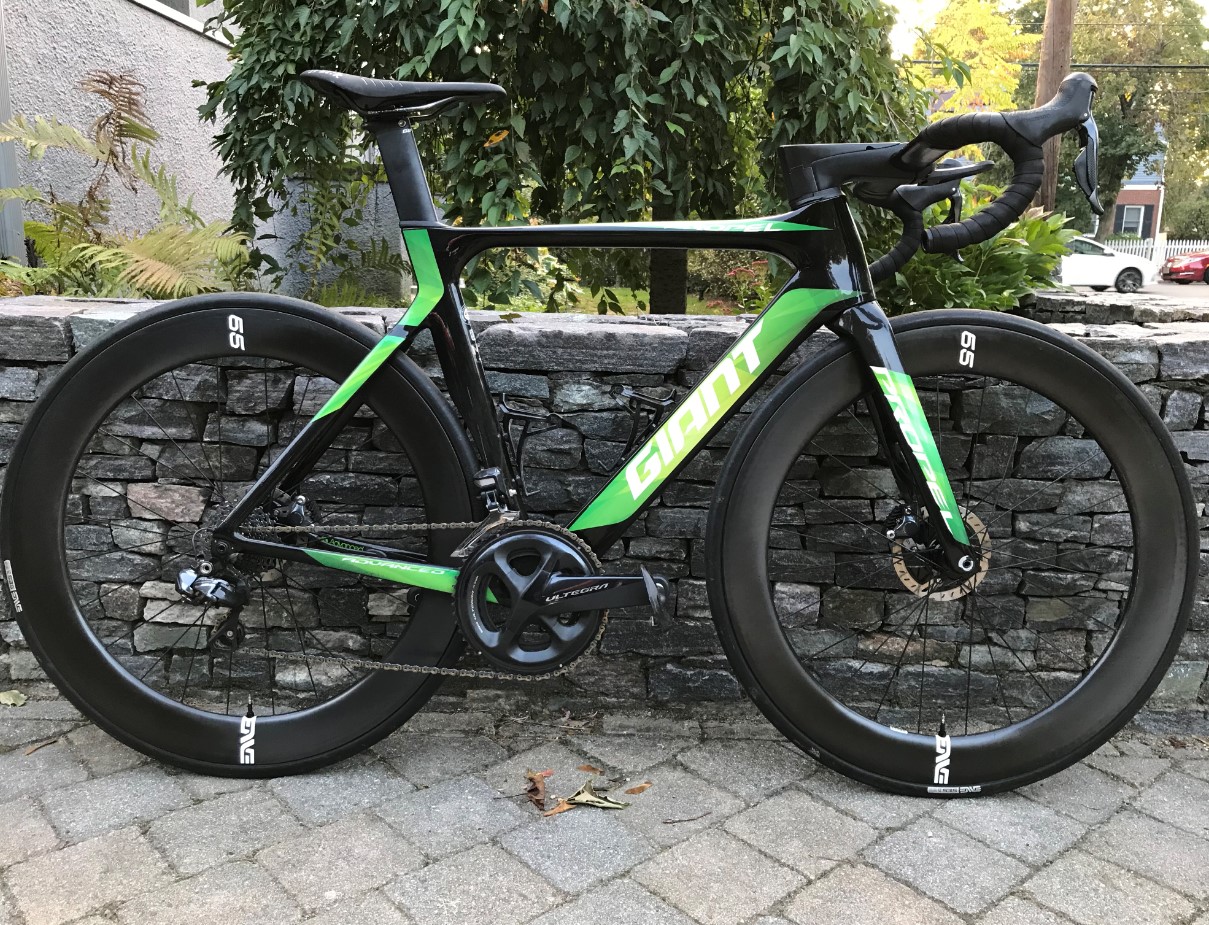
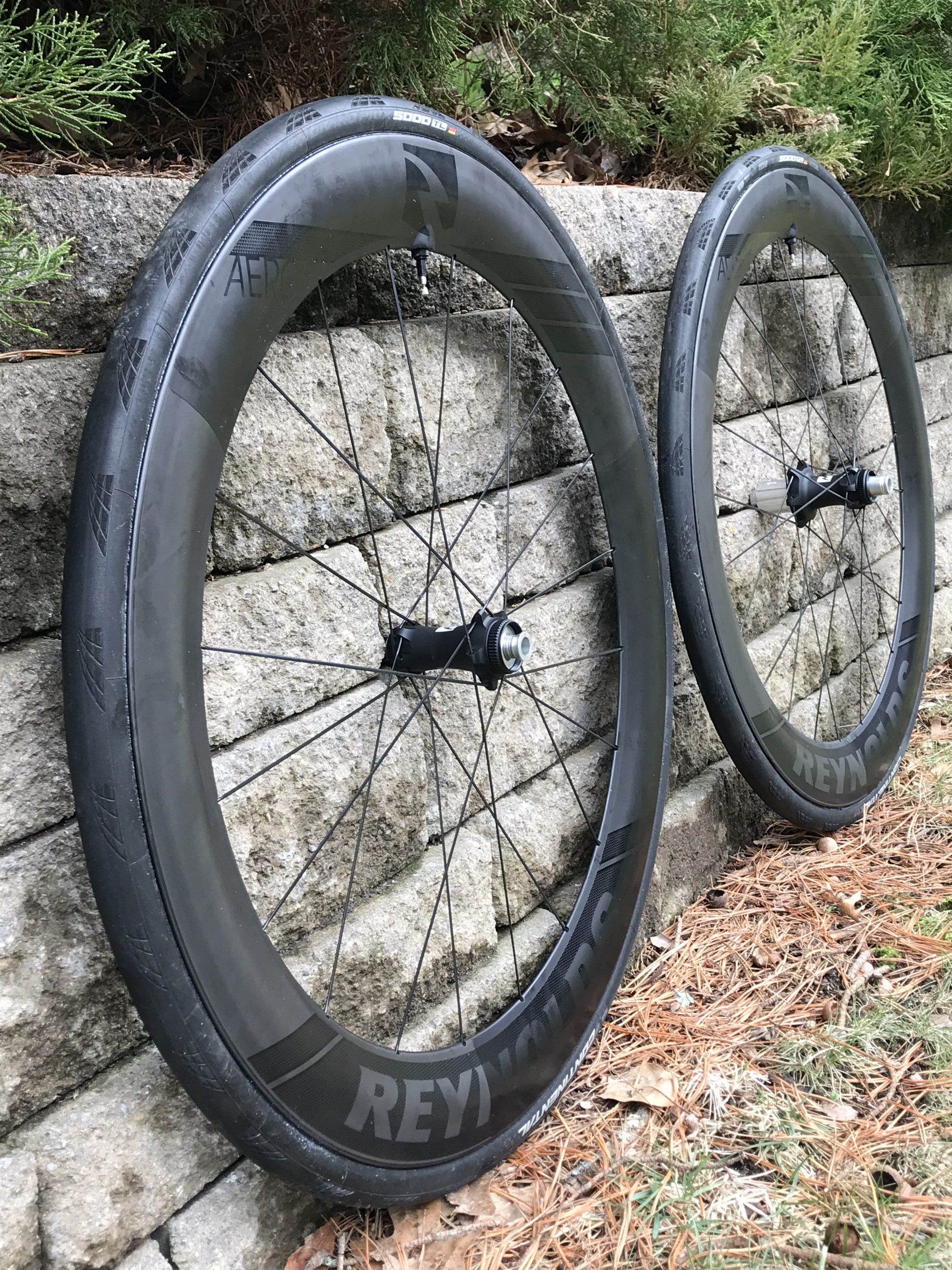
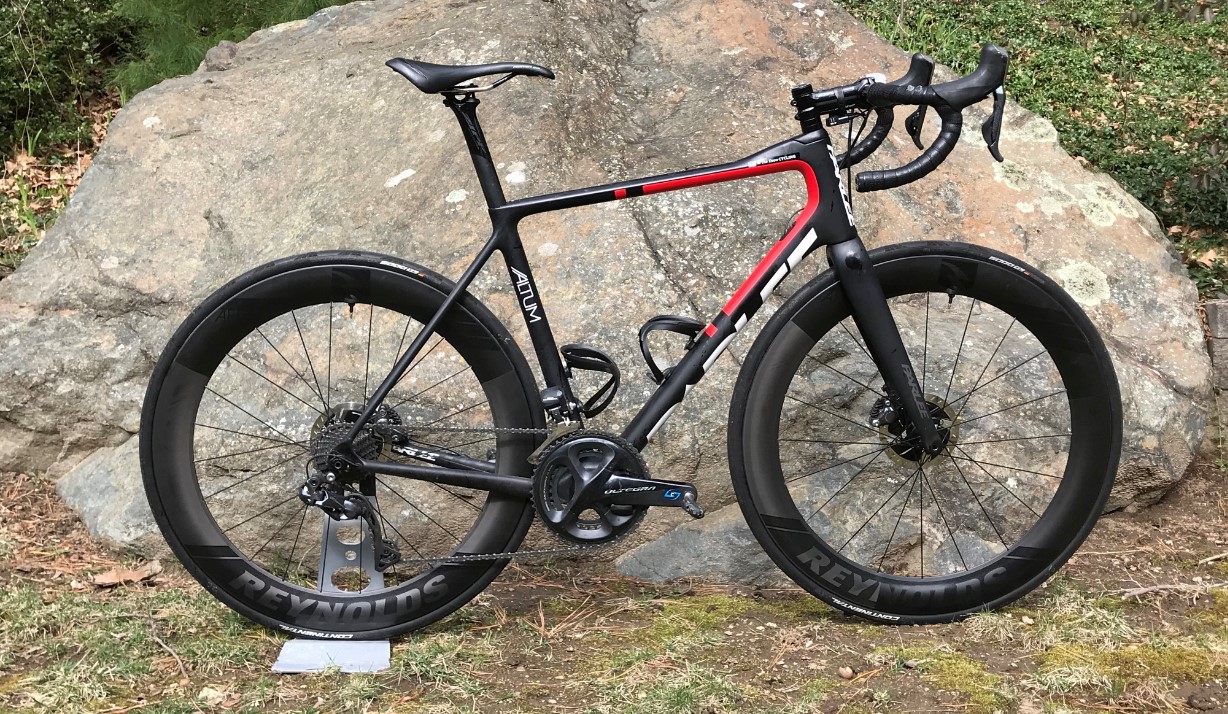
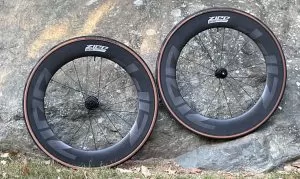
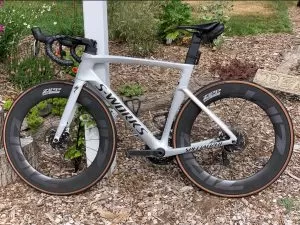
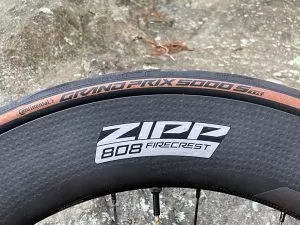
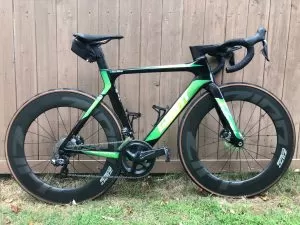
It’s interesting that will all of the technology and marketing, shaving your legs will save you as much wattage as anything on the bike.
Test Corima wheels, The are Great i have W Black 58m
Hello Steve, the Reynolds 65 Black DB and Enve’s 65 are very similarly priced at discount at the moment.
Would you say there are any major differences in characteristics between them ?
I have reviewed the tables and individual comments you have on both, however tje Reynolds are in the best category whilst Enve’s in the value.
It appears they are both very stiff and aero, similar weigth. Both are suceptible to side winds, so what are the differences if any and which would you recommend of the 2?
Enve are slightly wider inner rim,
I have the choice and availability of both ooffered at same price.
Eric, I’d say the Reynolds have the capability to be a faster aero wheelset if you optimize for it… 25mm tires, 25mph/40kph, one piece suit, aero helmet and aero body position. They will also take a bit more handling skill/confidence on a windy day. And, if the looks of your wheels motivates you further, I think they look a bit more blingy. Steve
Hi Steve,
Thanks for your incredibly thorough research and well written reviews. I’ve used these to make purchases in the past that I have been quite pleased with.
I am wanting to get some new wheels for my new Scott Addict RC 10. Our team has the opportunity to purchase wheels at a discount from Zipp. This means that the NSW series are within, well sort of, my budget. Could you advise me on what you think would be best for me? In my thinking my options are- 404’s, 353 NSW, 454 NSW, or possibly a 353 front and a 454 rear.
I’m a lightweight and so weight is always a concern for me. At age 67 comfort is as well. Based upon your how to choose a wheelset article here are my stats.
60kg with an FTP of 195 +-10 watts. (3.1 w/kg) Over a year’s riding shows the average elevation climb is 33 feet per mile mainly from short punchys. 80% of my rides are solo with the rest being fast group rides or races. Road surfaces are 1/3 rough, 1/3 chip seal, 1/3 smooth. My average solo speed is 17-18 mph.
Any advice would sure be appreciated. Thanks very much Steve!
– Craig R
Hi Craig, Thanks for your kind feedback. At your speeds, you’re not going to get a notable aero benefit of going deeper than the 353 NSW and could suffer some unwanted crosswind affects given your weight with 404 FC or 454 NSW. The weight of the 353 NSW will also help you going uphill and its internal width with a 30-32mm tire at the right pressure will make for a more comfortable ride on the rough and chip seal surfaces. For multiple reasons, then, I’d suggest the 353 NSW front and back. Steve
Trek (and maybe DT Swiss as well?) must have gotten quite a bit of negative feedback on the loudness of their freehubs, I recently bought an RSL 62 rear wheel and it is very quiet – only barely audible at higher speeds and pretty much inaudible at low speeds unless I turn my ear towards the hub. I’m sure it will become louder once the wheel gets some abuse but so far it is much quieter than the RSL 51 I was riding. I might have to start yelling “on your left” again instead of freewheeling.